Errors of British shipbuilding. The battle cruiser "Invinsible". H. 2
So, in 1902, John Arbetnot Fisher, who served as commander of the Mediterranean fleet at that time, proposed the projects of the new battleship “Unapproachable” and armored cruiser “Inaccessible” created by him together with engineer Gard. Around the time that Fisher and Gard developed the above ships, Sir Andrew Noble published a theoretical rationale for the advantages of 254-mm guns over 305-mm as the main caliber for battleships. Sir Andrew, of course, appealed to a higher rate of fire, but also to a smaller mass of 254-mm guns, due to which the battleship of the same displacement could receive a larger number of 254-mm trunks compared to 305-mm. This argument seemed to D. Fisher extremely convincing, so for his battleship he proposed 254-mm guns. Judging by the data of O. Parks, the “Impregnable” did not immediately become an “all-big-gun” ship, and it can be assumed that at first he had weapons similar to that offered by Sir Andrew, i.e. eight 254-mm with a dozen 152-mm. However, D. Fisher soon abandoned the intermediate caliber, increasing the number of 254-mm guns to 16, while the anti-mine caliber should have been 102-mm guns.
As for the armored cruiser "Inaccessible", then it was provided for a mixed artillery of 254-mm and 190-mm guns. Although the sources do not say this directly, but most likely it was intended to install only four 254-mm guns, i.e. fewer of them than on the battleship: on the other hand, the speed of the new ship was far superior to any armored cruiser of the world. As for the booking, the requirements for the new ship indicated:
As a matter of fact, even 75 – 102 mm of armor is sufficient for such protection, besides, we are talking only about the protection of artillery, but nothing is said about the corps, chimneys, logging. In general, the above phrase can be interpreted as you like, but not in terms of enhancing the booking of British armored cruisers.
It can be assumed that the project of the armored cruiser D. Fisher was strongly influenced by the Swiftshur and Tri-amph battleships.
These two ships were built for Chile, who sought to equalize themselves in power with Argentina, which was the time when the fifth and sixth armored cruiser of the Garibaldi type was ordered in Italy: it was the Mitra and the Roca, later renamed Rivadavia and Moreno ", but in the end they became" Nissin "and" Kasuga ". I must say that the Italian cruisers were very good for their time, but the British, by request of the Chileans, prepared a completely furious answer. "Constituion" and "Libertad" (Chileans who experienced difficulties with money, eventually gave them to the British, who renamed them "Swiftshur" and "Triumph") was a type of lightweight and high-speed battleship normal displacement 12 175 t. Their characteristics - 4 * 254-mm and 14 * 190-mm guns with 178-mm armor and speeds up to 20 nodes, probably struck D.Fisher's imagination. First, they confirmed the correctness of some of the calculations of Sir E. Noble, and second, despite the fact that the dimensions were even smaller than the largest British armored cruisers (Good Hoop - 13 920), they could hardly stand against " Libertad "even together. From the point of view of D. Fisher, the only drawback of these ships could be only low speed for an armored cruiser.
At the same time, the views of the British Admiralty on the use of armored cruisers also changed. If the ships of the Cressy, Drake, Kent and Devonshire types were created in order to protect British communications from attacks by French armored cruisers, additional tasks were set for the subsequent types of cruisers. As the famous British historian O. Parks writes:
In 1902, the main builder in Great Britain was replaced: Philip Watts, the creator of such interesting and famous ships as Esmeralda and O'Higgins, replaced White. They expected a lot from him.
Watts was in a rather interesting situation: by the time he took office, the British armored cruisers did not have artillery powerful enough to fight raiders or armor capable of ensuring the combat stability of ships in a squadron battle. Watts has always been prone to maximizing the firepower of ships, and his cruisers receive very strong weapons: the first series, the Duke of Edinburgh and Black Prince, developed in 1902 and laid out in 1903, receive six 234-mm main guns caliber instead of four 190-mm on the “Devonshire” or two 234-mm on the “Drake”. Alas, the reservation remains roughly the same as before: for some unknown reason, the British believed that armor-bearing cruisers would have enough armor to protect against 152-mm armor-piercing projectile. To be precise, the British considered protection for 152-mm steel shells sufficient for their armored cruisers, but this definition most likely meant armor-piercing.
Thus, in 1902 in the UK was a very interesting situation. John Arbetnot Fisher is often and rightly reproached for neglecting armor protection in favor of firepower and speed in the projects of his battlecruisers. But in fairness it should be said that such an approach is by no means his invention and that in England at the beginning of the century it was accepted everywhere. In the same 1902, the difference between the ideas of Fisher and the British Admiralty consisted only in the fact that the top naval hierarchies of Great Britain, having lightly armed and insufficiently armored armored cruisers, preferred to sharply increase their armament without losing their speed and leaving the reservation at the same level. And “Jackie” Fisher, having taken “Swiftshur” as a basis, with his very powerful armament, preferred to loosen the reservation and at the expense of it increase the speed. In any case, both the Fisher and the Admiralty came to the same type of armored cruiser — fairly fast, with powerful weapons, but weak, protecting only against medium caliber artillery.
Nevertheless, the ideas of D. Fisher were much more progressive than those adhered to by the Admiralty:
1) Although the armored cruiser proposed by D. Fisher was not the embodiment of the “only big guns” concept, it was nevertheless unified in terms of the main caliber with a corresponding battleship. That is, the "Inaccessible" carried the same main caliber as the "Unapproachable", yielding to it only in the number of trunks.
2) D. Fisher offered turbines and oil boilers for armored cruisers.
On the other hand, of course, the project of D. Fisher contained a number of completely unjustified, although quite funny innovations - for example, telescopic chimneys and refusal of masts (only a stand for radio).
Later, however, D. Fisher and Gard, an engineer, took a “step back” approaching their project to the Watts ships - they abandoned 254-mm caliber in favor of 234-mm, since this British instrument was very successful, and, in their opinion, The power of the 254-mm gun did not compensate for the weight gain. Now the armored cruiser they proposed was a ship, with a normal displacement of 14 000 t for oil heating or 15 000 t for coal. The armament consisted of 4 * 234-mm and 12 * 190-mm in two-turrets, the power of the mechanisms was at least 35 000 hp, and the speed had to reach 25 nodes. By the way, where did this speed come from - 25 nodes? O. Parks writes about this:
Here are just some armored cruisers and whose powers could develop such a speed? In France, only ships like the Waldeck Rousseau (23,1-23,9 bonds) possessed something similar, but they were laid at the end of 1905 and 1906, and of course, in 1903-1904, they could not know about them. "Leon Gambetta" had a speed not higher than 22,5 bonds, while in armored cruisers in other countries it was even lower. So we can only assume that the British, setting such a high level of speed, were victims of some kind of misinformation.
Of course, with such weapons and the free weight rate for reinforcement armor already remained - the cruiser received a standard 152-mm belt for British ships of this class (it’s unclear how the extremities were reserved). But the most unusual in the project was, of course, the placement of artillery weapons.
In this seemingly absurd scheme, the position of D. Fisher, who pointed out in his Memoirs, clearly manifested itself:
It should be noted that if such a viewpoint can hardly be considered correct and at least controversial for battleships, then for cruisers the fire on sharp bows and stern corners is really extremely important, and perhaps just as important as a side salvo. Cruisers in essence have to catch up a lot or run away from the enemy. As Rear Admiral Prince Louis Battenberg rightly noted:
Of course, it is extremely doubtful that such an unusual arrangement of artillery was applied in practice, and not only because of its novelty, but also for objective reasons: such a concentration of artillery in the extremities causes certain difficulties. In any case, D. Fisher & Gard's scheme was not accepted. Officially, the fleet did not want to switch to two-gun 190-mm towers - the Royal Navy, having suffered with the turrets of armored cruisers of the "Kent" class, did not want to see two-gun turrets on cruisers at all, but made an exception for 234-mm guns. In general, the last series of armored cruisers of Great Britain (type "Minotaur"), laid at the very beginning of 1905, turned out to be much more traditional than the innovative project of D. Fischer.
However, by the end of 1904, several events occurred that in any case devalued the D. Fisher project - primarily in the eyes of its creator.
Firstly, the battleship project “Non-Intrusive” faced criticism of 254-mm caliber guns, and the argument was that D. Fisher unconditionally sided with a twelve-inch caliber. We will not go into details now, but we note that from now on D. Fisher adhered to the point of view that:
And secondly, just towards the end of 1904 in England, it became known about the new Japanese “vundervaffe” - armored cruisers like “Tsukuba”.
These ships, in fact, to a large extent repeated the ideas of D. Fisher himself, expressed by him in the original version of “Unapproachable” and “Inaccessible”. The Japanese armed their armored cruisers with the same main caliber as the battleships - 4 * 305-mm guns, while their speed, according to the British, was to make 20,5 nodes. It should be noted that, before the Japanese, in 1901, in Italy, “battleships-cruisers” were laid down “Regina Elena”: the Admiralty knew that these ships carried two 305-mm and twelve 203-mm guns, while the speed, according to the English, was to make up the 22 node.
Thus, at the end of 1904, the United Kingdom was faced with the fact that other countries had begun building armored cruisers with the 305-mm main and 152-203-mm average caliber. Given that the British, unlike the Germans, were never content with lighter guns than other countries, their next step was completely obvious. In order to surpass the Italian and Japanese ships in firepower, while maintaining the speed advantage, there was only one rational solution - to build all-big-gun cruisers armed with 305-mm artillery.
Consequently, the fact that Invincible received 305-mm guns ... well, of course, the merit of D. Fisher is all the same. But we must understand that the twelve-inch caliber on his cruisers, he did not come as a result of a glimpse of genius or creative illumination, but under the influence of objective circumstances. In fact, we can say that England was forced to build armored cruisers with 305-mm artillery.
But here is the merit of D. Fisher indisputable, so it is in "pulling" the concept of "all-big-gun" on the armored cruiser. The fact is that the concept of “only big guns” was still not obvious to many: for example, it was not shared by the main builder F. Watts, who preferred mixed weapons from 305-mm and 234-mm guns, he was supported by Admiral May, controller Royal Navy.
At the end of 1904, Mr. D. Fisher received the post of First Sea Lord and organized the Design Committee, to which the most knowledgeable and influential people are responsible for the development and construction of ships for the Royal Navy. D. Fisher "managed to" push through "the rejection of medium-caliber artillery on battleships and armored cruisers: the committee members for the most part agreed on the need to arm the new armored cruiser 6 or 8 with 305-mm cannons. But the next problem arose - how to place this artillery on the future ship? The history of the selection of the artillery layout on the Invincible is a bit anecdotal.
The fact is that the committee at its meetings considered many different options for the arrangement of 305-mm artillery for an armored cruiser (knowing the extravagance of D. Fisher, we can assume that it was something extraordinary), but could not come to an agreement and the matter was stalled. Meanwhile, one of the chief builder’s subordinates, engineer D. Narbett, who was responsible for developing the details of the projects under consideration, repeatedly presented sketches of an armored cruiser to his boss, F. Watts, with weapons from only 305-mm guns. But the chief builder categorically refused to submit them for consideration by the Design Committee.
But a drop sharpens a stone, and some day F. Watts, who was probably in a particularly good mood, nevertheless took D. Narbett’s drawings with the promise to present them to the Committee. Just on that day, for some error, the meeting turned out to be without an agenda, so that the members of the committee could only disperse. At this point, F. Watts pulled out D. Narbett’s drawings, and D. Fisher seized on it in order not to disrupt the meeting. Having reviewed the submitted sketches, the members of the Committee chose the layout of artillery for both the battleship and the armored cruiser from those presented by D. Narbett.
True, for an armored cruiser, the first one, nevertheless, was considered option “A” - a project for the deployment of artillery presented by D. Fisher and Gard.
It was rejected because of the linearly elevated location of the feeding towers, which was still a little feared, and the excessively low height of the board in the stern. Next, consider the option "B"
It was abandoned because of doubts about the ship’s seaworthiness, which had two heavy 305-mm towers on the bow across the center plane of the ship. In addition, there was a weakness of the side salvo. What up to the project "C"
He was also accused of poor seaworthiness, although in this case the two bow towers were heavily displaced to the center of the ship. In addition, there was a weakness of fire in the stern (only one 305-mm tower) and this option was quickly abandoned. But the “D” scheme was considered by the committee members to be optimal, since it provided strong fire both on board and right on the nose, as well as on sharp nasal corners.
The diagonal arrangement of two “traverses” (i.e. located in the center of the hull) towers of the main caliber became the addition of this scheme, but the reasons for this decision are unclear.
One glance at the scheme suggests that the British hoped to achieve an eight-gun salvo in a narrow, roughly 30-degree sector. But sources say that the British initially did not want anything like that, but assumed that the turret tower could only fire on the opposite side if another turret tower was disabled. But there is an interesting nuance.
In the battle at Falkland, the British tried to shoot eight guns on board, but quickly discovered that the roar and the effects of muzzle gases on the tower closest to the enemy prevented her from firing to the utmost inability to fire. It was then that it was noted that shooting from the turret tower to the opposite side is possible only if the tower closest to the enemy is disabled. Accordingly, it is quite possible to assume that initially the Committee nevertheless counted on shooting from eight guns, but in practice this turned out to be unattainable.
Subsequently, the project "E" slightly improved - by lengthening the forecastle in the stern, in order to raise the traverse towers above sea level.
It was she who became the final for battlecruisers of the Invincible type.
It is also interesting that when choosing weapons schemes, the committee members discussed options for placing all the guns in the center plane, as well as placing the traverse towers closer to the ends, in order to provide an airborne volley of eight guns, as it was later done on New “Sealand” and German “Von der Tanne”.
But the first option was refused due to very weak longitudinal fire - only one two-gun tower could “work” in the bow, stern and on sharp course corners, which was declared unacceptable. As for the separation of the towers to the extremities, the committee recognized the usefulness of this innovation, but did not see the possibility of shifting the towers without changing the ship’s lines, and they were needed to achieve the 25-node speed.
From the standpoint of today, the layout of the Invincible’s artillery is considered unsuccessful and, of course, this is true. According to the results of the practice of the First World War, an unequivocal conclusion was made that, for effective shooting, it was necessary to have at least eight guns on board, while the shooting should have been done with half shots, i.e. four guns (the rest at this time reload). The use of fewer than four guns in the "half-silt" made it difficult to determine where the shells fell and, accordingly, to adjust the fire. At Invincible, in the same direction, only six guns could be fired, respectively, it could only fire three-guns, or shoot at them with full salvos, which delayed the shooting. The creators of the Russian and German dreadnoughts knew all this well before the First World War.
Why did members of the Design Committee not consider this?
The fact is that the Russian-Japanese war had a great influence on the tactics of artillery combat, which demonstrated, among other things, the ability to conduct effective fire (in fact - with great reservations, but nonetheless) at a distance in 70 cables. At the same time, according to pre-war views, the ships had to fight at a distance of no more than 10-15 cables.
So, in order to understand why Invincible turned out the way it turned out, we must remember that D. Fisher arrived at the concept of “all-big-gun” long before the Russian-Japanese war. His first offspring, the Dreadnought and Invincible, were developed during this war, when it was not yet possible to comprehend and draw conclusions from its battles. Suffice it to recall that the Tsushima battle took place on 27-28 in May of 1905 (in a new style), and the main drawings and detailed elaboration of Invincible were ready on 22 in June of 1905, that is, all major decisions on it were made much earlier. And these decisions were made on the basis of the pre-war practices of the British fleet, and not by the results of the analysis of the battles of Shantung and Tsushima.
And what were these practices?
To be continued ...
Previous articles of the cycle:
Errors of British shipbuilding. Linear Cruiser "Invincible".
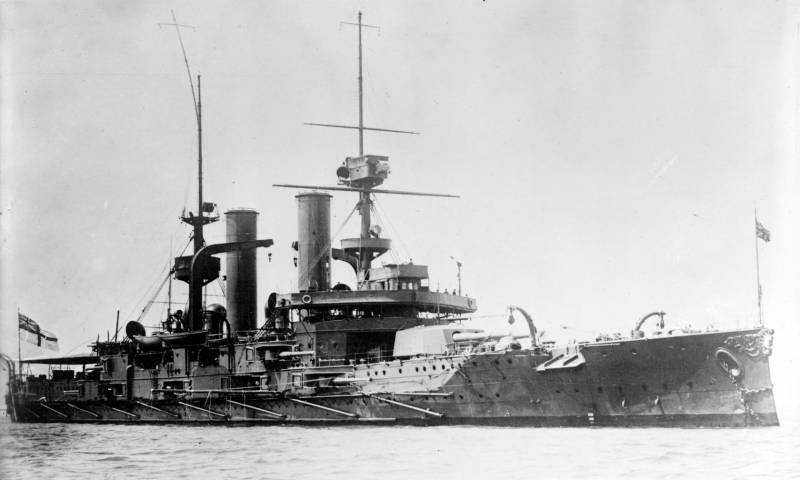
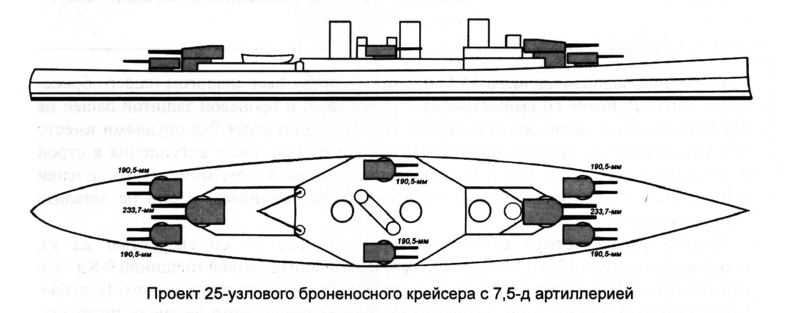
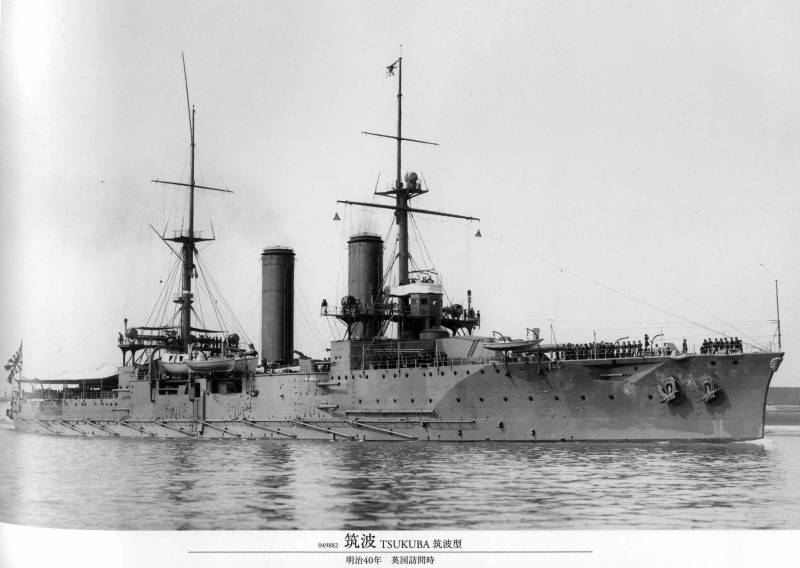
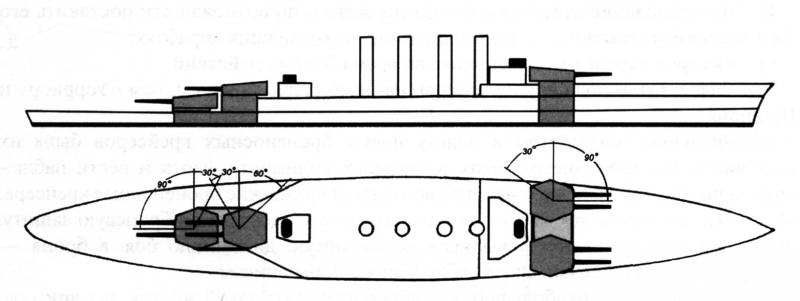
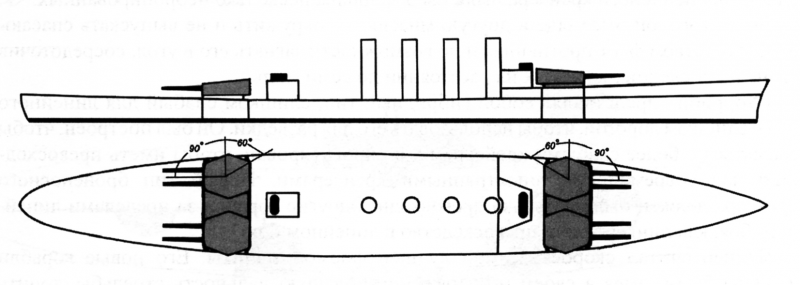
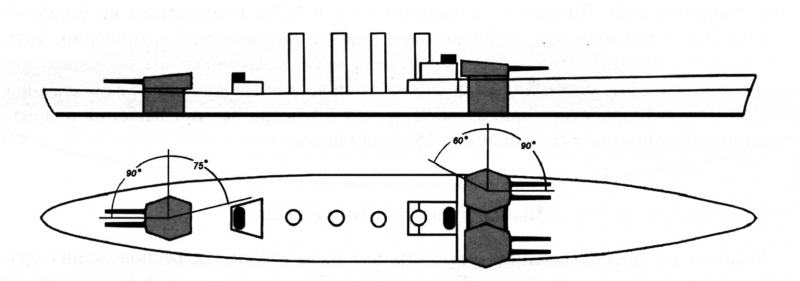
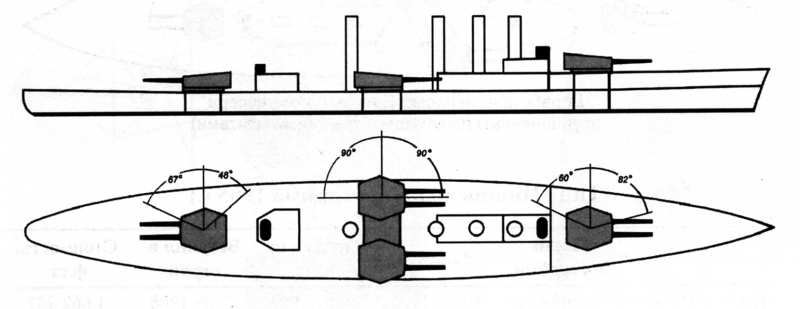
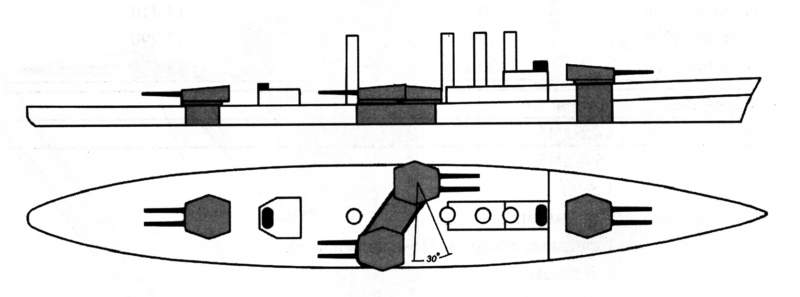
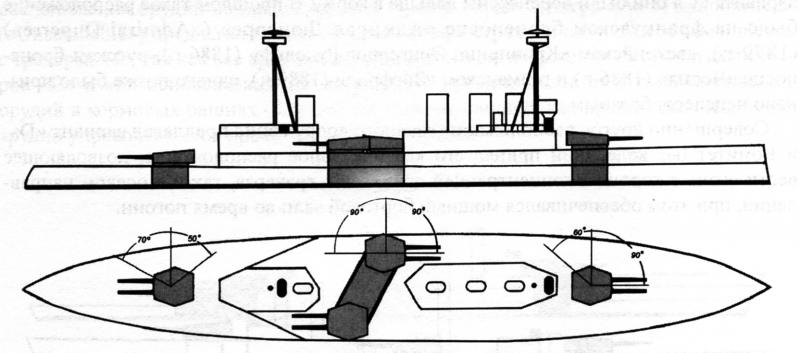
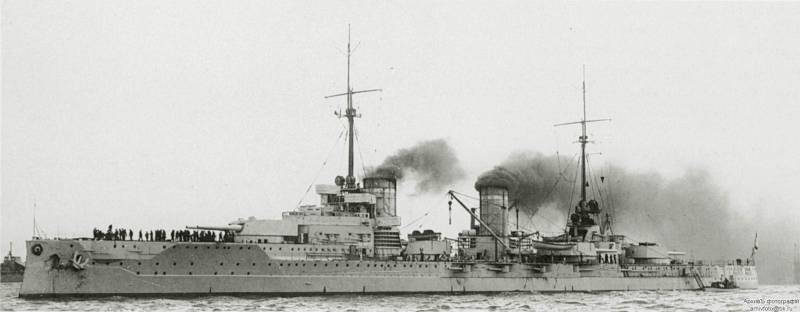
Information